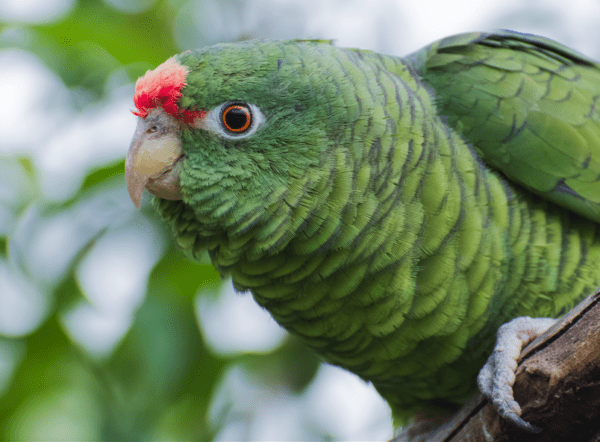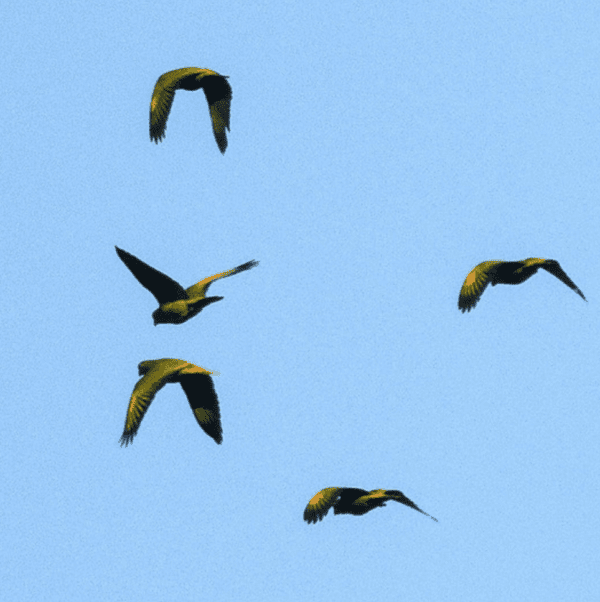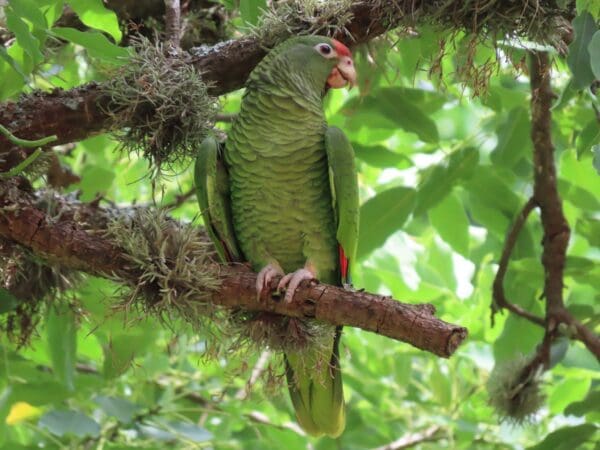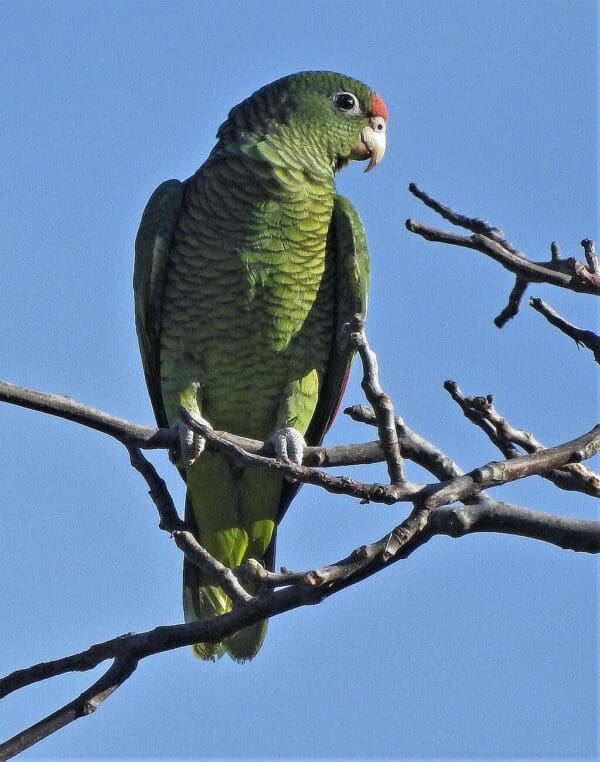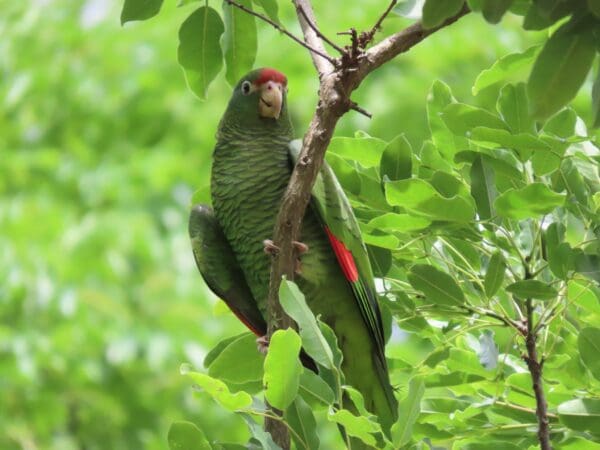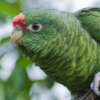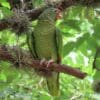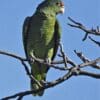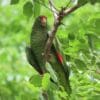Tucumán Amazon
Also known as:
Alder Parrot (Amazon)
Also known as:
Alder Parrot (Amazon)
DID YOU KNOW?
The Tucumán Amazon is sometimes considered conspecific with Amazona pretrei by some authors.

Amazona

tucumana
Size:
31 cm (12.1 in)
Weight:
320 g (11.2 oz)
Subspecies including nominate:
one
Colour Adult:
Both adults mainly green, largish parrots; stocky, with short tail. Red forehead, forecrown and on upperwings; body feathers scalloped with black; orange thighs; tail green with red at base. Beak pink/tan. Eye orange/red.
Colour Juvenile:
As in adult but with minimal red on forehead, followed by orange in some individuals; primary coverts and thighs green. Eye grey.
More Information:
Content Sources:
CITES
BirdLife International
Cornell Lab of Ornithology/Birds of the World
A Guide to Parrots of the World, Juniper and Parr, 1998
Parrots of the World, Forshaw and Cooper, 1989.
L. Rivera, 2004
Genus Amazona, Stoodley and Stoodley, 1990.
Article, “Tucuman Amazon,” by Susan Clubb, DVM
Parrots of the World, Forshaw, 2006.
Parrots in Aviculture, Low, 1992.
Captive Status:
Limited number in captivity.
Longevity:
Up to 50 yrs.
Housing:
Aviary or suspended enclosure, minimum length 3 m (9.8 ft).
Diet:
Fruit such as: apple, pear, orange, banana, cactus fruits, pomegranate, forming about 30 % of the diet; fresh vegetables such as: carrot, celery, green peas, beans, fresh corn, green leaves; spray millet and limited mixed seed, cooked beans and pulses, complete kibble.
Enrichment:
Are chewers, so provide safe wood (fir, pine, willow and elder) and vegetable tanned leather toys, foraging/puzzle toys; ladders, swings, ropes and different sized perches. Also enjoys bathing so provide overhead misters or shallow water bowls.
Nest Box Size:
12″ x 12″ x 24″ (30.5 cm x 30.5 cm x 61 cm) vertical box.
Clutch Size:
3 to 4
Fledging Age:
8 to 9 weeks
Hatch Weight:
—
Peak Weight:
—
Weaning Weight:
—
World Population:
6000-15,000 mature individuals. Rapidly decreasing.
IUCN Red List Status:
Vulnerable
CITES Listing:
Appendix I
Threat Summary:
A BirdLife ‘restricted range’ species. The species is susceptible to trapping for trade, which is considered the main driver of rapid population declines, particularly in the past. Around 20,000 individuals were exported from Argentina in the mid to late 1980s and 5400 were captured in Bolivia for the international pet trade prior to it being listed by CITES. After it was placed on Appendix I, international trade was effectively cut off, although local exploitation continues at a reduced scale. Across the species’ range, tree cover is lost at a rate of 4% over three generations. Further threats to its habitat include slash-and-burn agriculture and wildfires.
Range:
Occurs in SE Bolivia, in Chuquisaca and Tarija, and NW Argentina, in Jujuy, Salta, Tucuman and Catamarca.
Habitat:
In montane forest with also Nothofagus and Podocarpus forest. Found at 1800-2000 m (5904-6560 ft); descends to 350 m (1148 ft) during winter.
Wild Diet:
Feeds on Podocarpus parlatorei, Blepharocalyx salicifolius, Myrcianthes mato, Acacia visco, Cinnamomun porphyria, Juglans australis and Cedrela lilloi, as well as fruits and seeds of Podocarpus, Blepharocalyx, Myrcianthes and leguminous trees as Acacia. Also taken are the flowers of Juglans australis and flowers and fruits of exotic species such as Morus alba, Mespilus germanica and Ligustrum lucidum.
Ecology and Behaviour:
Can occur in very large groups (up to 10,000 birds or more, the entire population of an area) but generally in flocks from a few to over 200 individuals.
Clutch and Egg Size:
3 to 4 rounded eggs, 34.5 x 26.5 mm (1.3 x 1 in).
Breeding Season:
November-January; nest is in large trunks of Blepharocalyx, Podocarpus, Alnus, Ilex argentina and other tree species, often originally excavated by Cream-backed Woodpeckers (Campephilus leucopogon).
